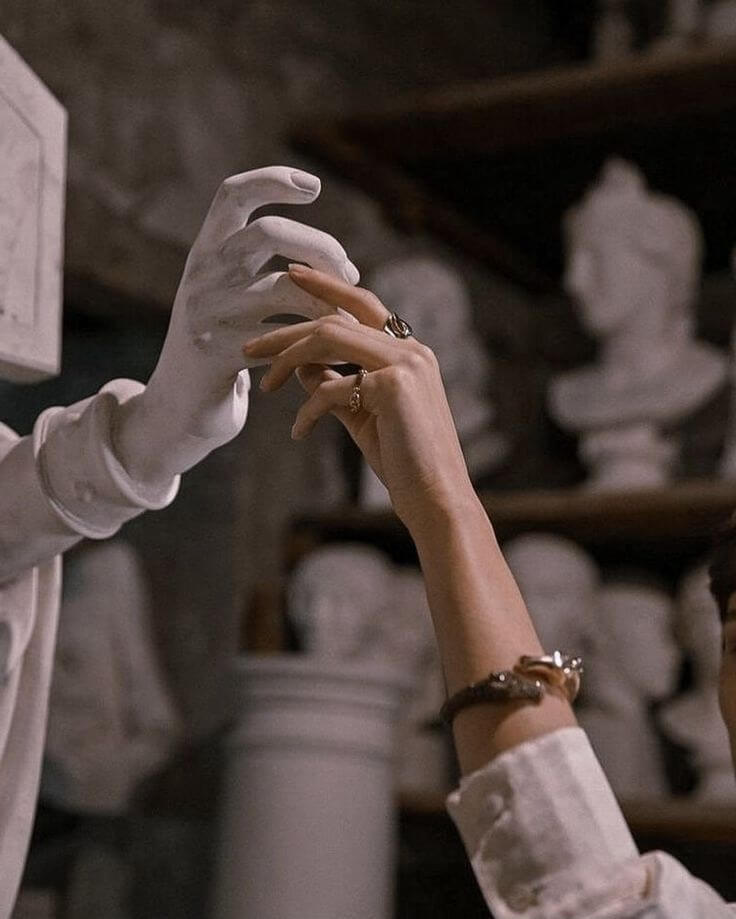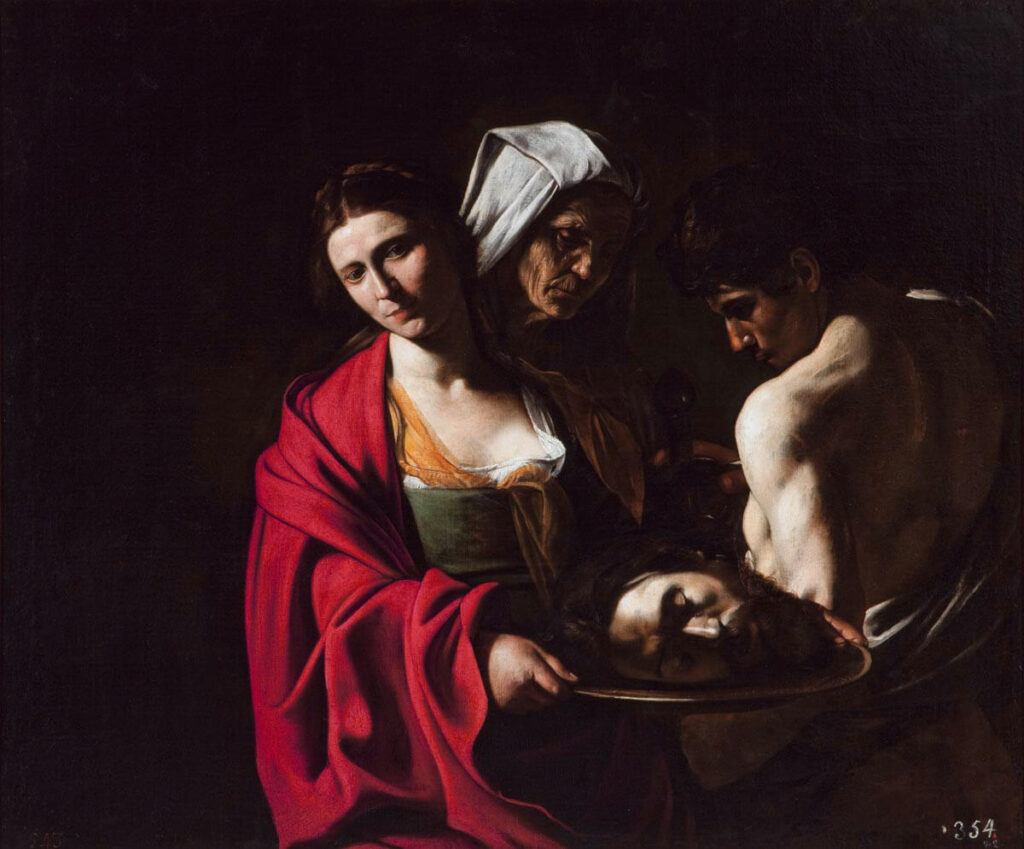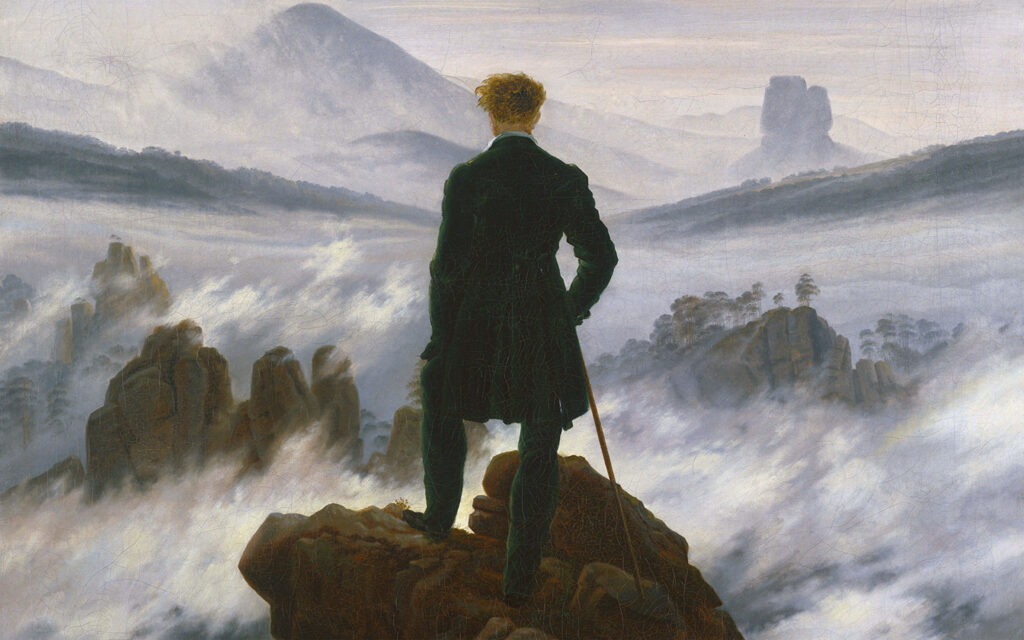Dark Academia is a mood, an aesthetic, a philosophy—but at its core, it’s a love letter to intellectual beauty, mystery, and a world steeped in history. I think, it owes much of its atmospheric depth to two of the most emotionally charged art movements in history: Baroque and Romanticism.
When I studied art history at university, I was always drawn to Romanticism—it felt like an era that truly understood the beauty in both light and darkness. There’s something mesmerizing about the way it embraced raw emotion. The idea that even sorrow could be sublime… It made me wonder—have we lost that kind of depth in modern art, or are we just looking in the wrong places?

Baroque: Drama, Shadows, and Intellectual Grandeur
The Baroque era (17th-18th century) has always fascinated me—not just for its beauty, but for the sheer drama it brought to art. It wasn’t subtle; it was bold, emotional, and full of contrast. Light and shadow weren’t just techniques, they were storytellers, pulling you into a scene that felt almost alive.
1. Theatrical Lighting: The Art of Chiaroscuro
Caravaggio mastered chiaroscuro, the stark contrast between deep shadows and brilliant highlights.

Source: Caravaggio – Salome
This visual intensity mirrors Dark Academia’s own love for introspection, mystery, and the idea that knowledge is both illuminating and dangerous.
Think candlelit rooms, the glow of knowledge fighting against encroaching darkness.
The way a single ray of light illuminates a scholar at work or an old manuscript in an otherwise dimly lit space.
2. Opulence Meets Intellectualism
Baroque interiors were filled with heavy drapes, dark wood, towering bookcases, and gilded details. Think of a Baroque study:
The sense of scale and depth, where every detail matters, just like in an over-annotated novel.
Rich textures, velvet and brocade; dark mahogany desks stacked with books.
Grand cathedrals and university halls with intricate carvings, evoking the kind of old-world academia that Dark Academia seeks to recreate.
Romanticism: The Obsession With Beauty and Melancholy
If Baroque provided the setting, Romanticism (late 18th-19th century) provided the soul. Where Baroque was grand and structured, Romanticism was deeply personal, driven by emotion, mystery, and the sublime. It embraced longing, the fleeting nature of time, and the beauty in tragedy.
https://artsandculture.google.com/entity/romanticism/m06hsk?hl=en
1. The Sublime: Nature, Ruins, and the Unreachable
Romantic painters like Caspar David Friedrich captured the idea of the sublime—nature’s overwhelming beauty and power.

Source: Caspar David Friedrich’s Wanderer Above the Sea of Fog (1817)
- Ruined monasteries, crumbling castles, fog-covered landscapes—aesthetic gold for Dark Academia.
- The sense of being small in the face of something greater—whether it’s a stormy sky or the weight of centuries-old knowledge.
This love of decay and history feeds into Dark Academia’s love of aged books, dusty libraries, and forgotten relics.
2. Melancholy and the Beauty of the Past
Romanticism thrived on nostalgia and loss. J.M.W. Turner’s stormy seascapes, Goya’s haunted figures, Delacroix’s emotional intensity—they all resonate with the way Dark Academia romanticizes the past.

Source: J.M.W. Turner – The Shipwreck (1805)
- The feeling of being born in the wrong era, longing for something just out of reach.
- A fascination with tragedy, death, and the fleeting nature of time.
Literary Romanticism also plays a role—think Byron, Keats, Shelley—all poets obsessed with knowledge, passion, and inevitable doom.
Why These Movements Matter to Dark Academia
Baroque gives Dark Academia its atmosphere—the heavy, intellectual grandeur. Romanticism gives it its soul—the longing, the melancholy, the obsession with knowledge that doesn’t necessarily lead to happiness. Together, they create an aesthetic that feels both timeless and deeply human.
And maybe that’s why Dark Academia resonates so strongly. It isn’t just an aesthetic—it’s an emotional state. A world where every shadow holds a story, every book holds a secret, and every fleeting moment is tinged with the weight of history.
Oh, the ache of knowing you’ll never have enough time to read everything, to know everything….
